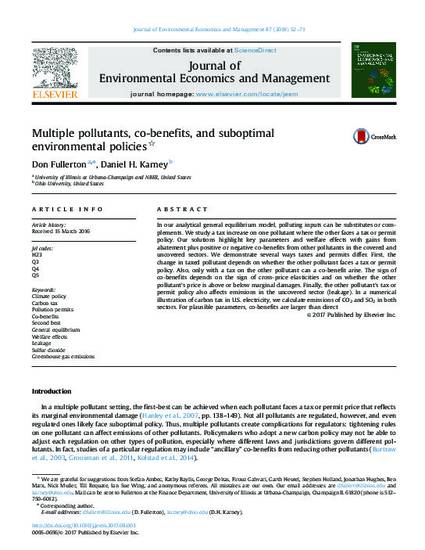
Article
Multiple Pollutants, Co-Benefits, and Suboptimal Environmental Policies
Journal of Environmental Economics and Management
(2018)
Abstract
In our analytical general equilibrium model, polluting inputs can be substitutes or complements. We study a tax increase on one pollutant where the other faces a tax or permit policy. Our solutions highlight key parameters and welfare effects with gains from abatement plus positive or negative co-benefits from other pollutants in the covered and uncovered sectors. We demonstrate several ways taxes and permits differ. First, the change in taxed pollutant depends on whether the other pollutant faces a tax or permit policy. Also, only with a tax on the other pollutant can a co-benefit arise. The sign of co-benefits depends on the sign of cross-price elasticities and on whether the other pollutant’s price is above or below marginal damages. Finally, the other pollutant’s tax or permit policy also affects emissions in the uncovered sector (leakage). In a numerical illustration of carbon tax in U.S. electricity, we calculate emissions of CO2 and SO2 in both sectors. For plausible parameters, co-benefits are larger than direct benefits.
Keywords
- environmental policy,
- pollution tax,
- permits,
- carbon emissions,
- sulfur dioxide
Disciplines
Publication Date
2018
Citation Information
Don Fullerton and Daniel Karney. "Multiple Pollutants, Co-Benefits, and Suboptimal Environmental Policies" Journal of Environmental Economics and Management (2018) Available at: http://works.bepress.com/don_fullerton/72/
